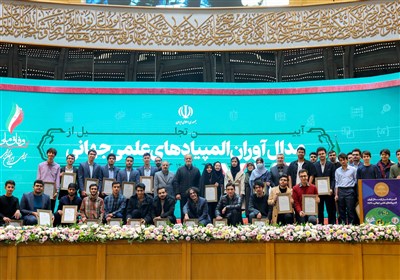Pandemic, Screen Time Fuel Surge in Childhood Myopia, Global Study Finds
TEHRAN (Tasnim) – A recent global analysis highlights a significant rise in childhood short-sightedness, with one in three children now affected, as researchers link increased screen time during COVID lockdowns to worsening vision.
A worldwide analysis has found that one in three children is now short-sighted, with increasing rates of myopia or difficulty seeing distant objects clearly.
Researchers suggest the COVID-19 pandemic played a role in worsening children's eyesight, as prolonged indoor time and extended screen use contributed to vision deterioration.
The study, published in the British Journal of Ophthalmology, predicts that the global issue of myopia will worsen, potentially affecting millions more children by 2050.
The highest rates of myopia are observed in Asia, with 85% of children in Japan and 73% in South Korea being short-sighted. In contrast, countries like Paraguay and Uganda show the lowest levels, at approximately 1%.
The research, involving more than five million children and teenagers from 50 countries, revealed that short-sightedness rates have tripled since 1990, now affecting 36% of young people.
The rise in myopia was particularly pronounced following the pandemic, according to the researchers.
Myopia typically begins in primary school and worsens until the eyes stop growing, around the age of 20.
Living in East Asia, starting school at an early age, and genetic predisposition are key factors contributing to myopia. For instance, children in Singapore and Hong Kong begin education as early as two years old, which leads to extended focus on books and screens, straining their eye muscles.
In regions such as Africa, where schooling often begins at six to eight years old, the prevalence of myopia is significantly lower, approximately seven times less common than in Asia.
During the COVID lockdowns, when millions of children were confined indoors, their eyesight was negatively affected. The study suggests a potential link between the pandemic and accelerated vision decline among young people.
By 2050, more than half of the global teenage population may be affected by myopia, with girls and young women expected to experience higher rates due to spending less time outdoors and earlier growth and puberty, the researchers warn.
Asia is forecast to have the highest rates, with 69% of children short-sighted by 2050, but developing countries could also see rates reach 40%.
Eye experts recommend that children spend at least two hours outdoors daily, especially between the ages of seven and nine, to reduce the risk of myopia. While it remains unclear whether the benefit comes from natural sunlight, physical activity, or focusing on distant objects, outdoor time is deemed crucial.
"There is something about being outside that is a real benefit to children," says Daniel Hardiman-McCartney, a clinical adviser at the UK College of Optometrists.
Parents are also advised to schedule eye tests for children between seven and ten years old, even if previous checks showed normal vision.
Since myopia tends to run in families, children with short-sighted parents are three times more likely to develop the condition.
Although myopia cannot be cured, it can be managed with glasses or contact lenses, and in some cases, special lenses can slow its progression. However, these options can be costly.
In Asia, where these lenses are popular, innovative solutions such as glass-walled classrooms that simulate outdoor learning environments are also being employed.
Researchers express concern that the growing prevalence of myopia could lead to a rise in eye conditions later in life.
Signs of myopia include difficulty reading distant objects, sitting close to screens, frequent headaches, and rubbing the eyes.






